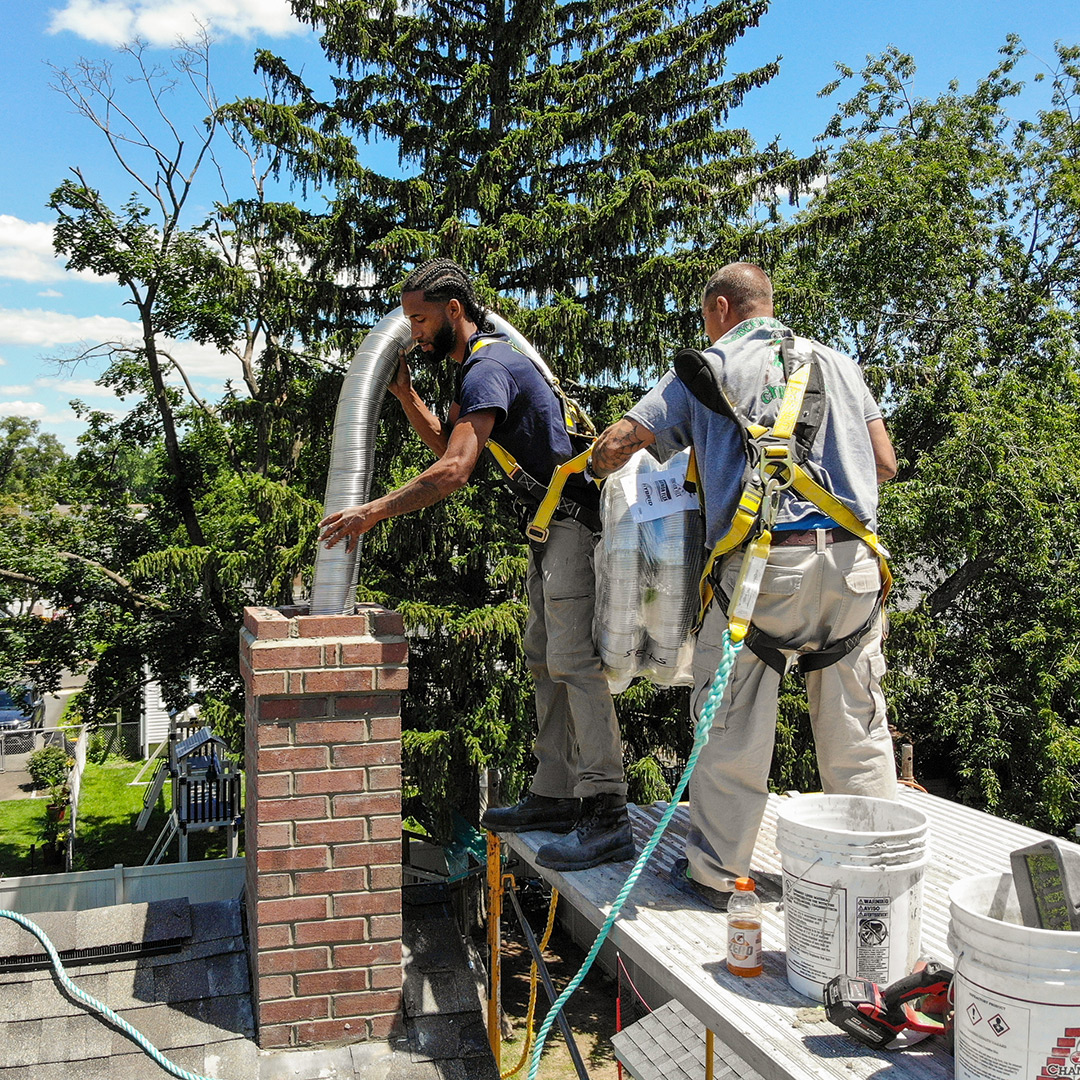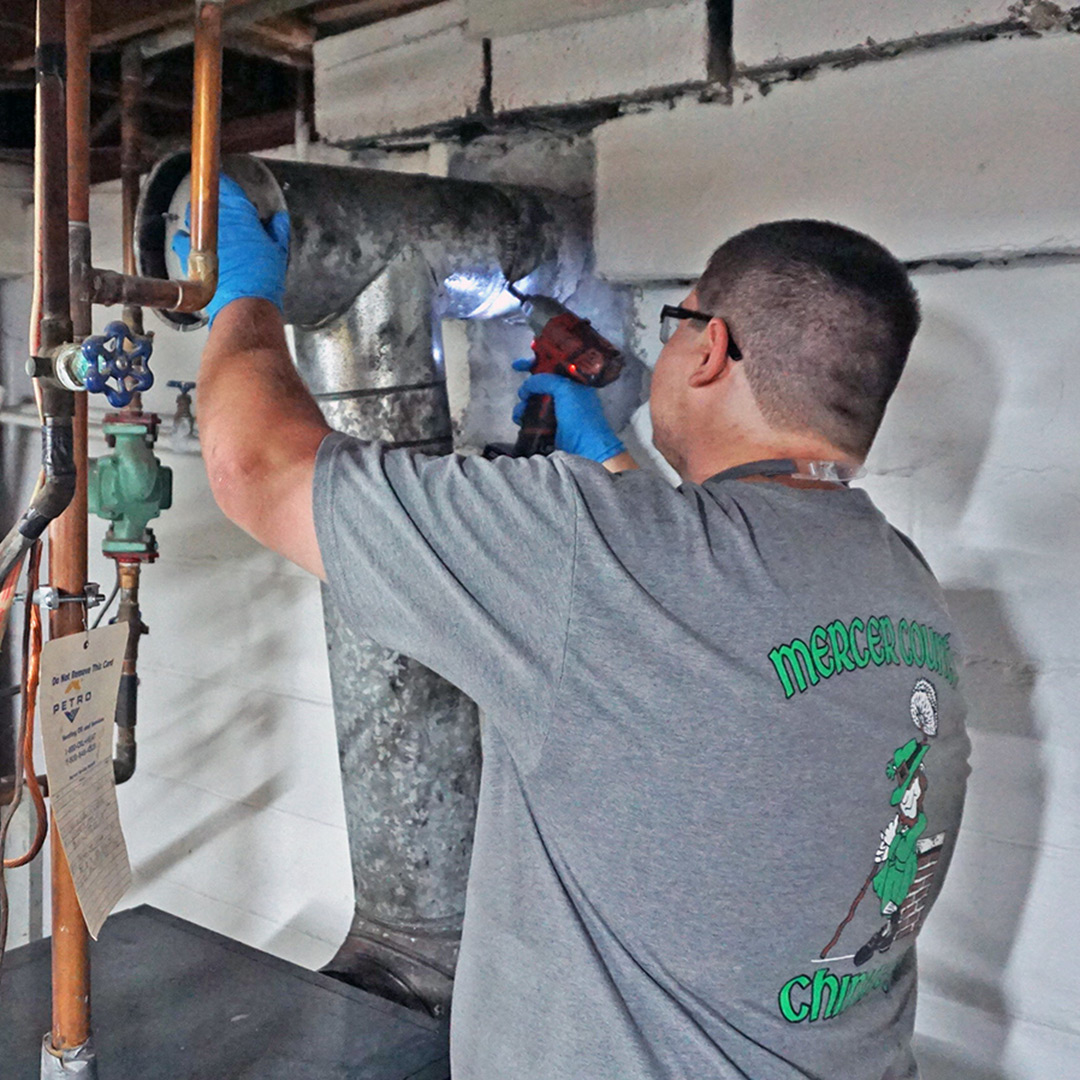Will My Chimney Need to be Relined with A New Furnace?
So, your old furnace finally gave up the ghost, and you are spending your time pricing new furnaces on the internet. It may have occurred to you that your chimney is involved in the process of replacing your furnace. You may be asking yourself- will my chimney need to be relined with a new furnace? It’s a legitimate question, so let’s investigate further.
 The Role of Your Chimney with a New Furnace
The Role of Your Chimney with a New Furnace
Traditionally, chimneys serve as the pathway for smoke, combustion gases, and other byproducts to exit your home safely. However, with advancements in furnace technology, the requirements for these pathways have changed. Modern furnaces, especially high-efficiency models, often produce lower exhaust temperatures, which can lead to condensation and potential damage inside traditional chimneys not equipped to handle this change.
Indications Your Chimney Needs Relining
Several factors indicate the necessity for chimney relining when installing a new furnace. These include:
Compatibility and Safety
If your new furnace is a high-efficiency model, it’s likely designed to vent exhaust in a way that’s incompatible with your existing chimney without a liner. Relining is crucial to ensure these exhaust gases are safely ushered outside, eliminating potential health hazards.
Building Regulations and Codes
Local building codes often have strict requirements regarding furnace installations and chimney linings. These codes are designed to ensure both safety and efficiency and must be observed.
Chimney Inspection Results
A chimney inspection by a qualified chimney sweep service can reveal issues such as cracks, deterioration, or improper sizing for your new furnace. These problems often necessitate relining to ensure safe and efficient operation.
Types of Chimney Liners
When it comes to relining your chimney, there are a number of materials and types to consider, each with its advantages and considerations:
Metal Chimney Liners
Metal chimney liners are usually made from stainless steel or aluminum. They are durable, resistant to corrosion, and suitable for gas and oil furnaces. Metal chimney liners are a popular choice for their longevity and easy installation.
Clay Tile Chimney Liners
While more traditional, clay tile liners are less suited to the lower temperatures and increased condensation modern furnaces produce. They are commonly used in older homes and might require replacement or modification for new furnace installations.
Cast-in-Place Chimney Liners
Cast-in-place chimney liners provide a seamless, insulated path for exhaust gases, improving a chimney’s efficiency and safety. These liners are versatile and can be used with various types of furnaces.
Assessment by a Qualified Chimney Sweep Service is Vital
Determining whether your chimney needs to be relined for a new furnace installation is not a straightforward DIY task. It takes a professional assessment by certified chimney sweeps who can evaluate your current chimney’s condition, the specifications of your new furnace, and local building codes to provide a tailored recommendation.
 To Sum Up
To Sum Up
Upgrading to a new furnace is a big investment in your home’s comfort and efficiency. Ensuring your chimney is properly relined to accommodate this upgrade is crucial for your heating system’s safety, performance, and compliance. By understanding the importance of chimney relining and seeking professional advice, homeowners can make informed decisions that enhance their home heating solutions’ longevity and efficiency.
Mercer County Chimney is the Chimney Liner Expert
Why take the risk of installing a new furnace with the same old chimney liner? If you live in the extended Mercer County area, Hamilton, Lawrenceville, Chesterfield, or Allentown areas, trust us to install a new chimney liner with your new furnace. Call us at 609-802-5288 or fill out our easy online contact form. One of our chimney experts will be happy to discuss installing a new liner in your chimney.


